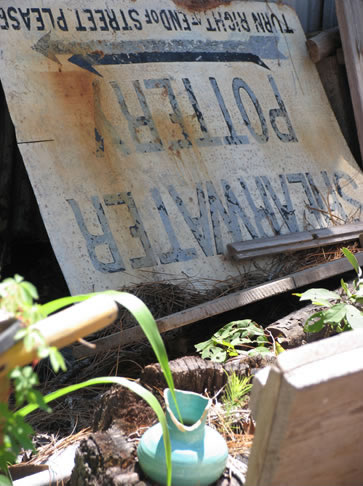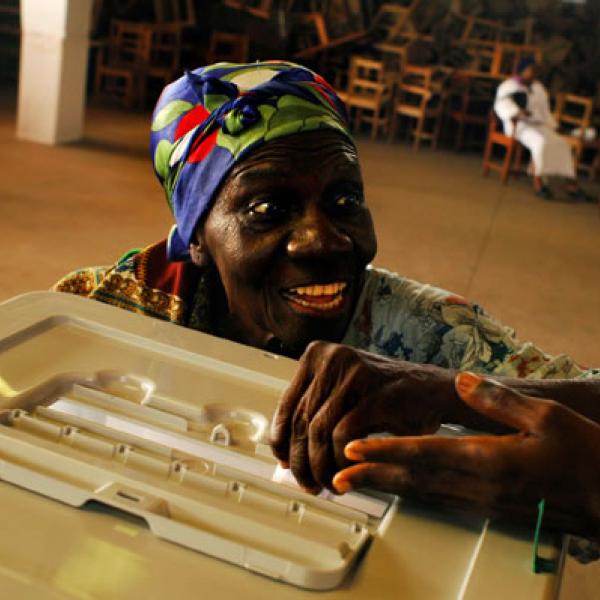ArtsReady

"What if your burning passion burned out of control?" asks an advertisement for ArtsReady, a new web-based tool designed to help arts organizations prepare for disasters before they happen. The program was created in the wake of Hurricanes Katrina and Rita, which devastated the Gulf Coast in late 2005, leaving many local artists and arts organizations displaced as well as financially and physically devastated. South Arts, an Atlanta-based regional arts organization, quickly raised about $200,000 to spread among its member states in need of immediate assistance. But the organization also began to ask tougher, long-term questions about how it could be of help to its constituents when it came to natural and other disasters. South Arts couldn't prevent another hurricane, but it could make sure artists and arts organizations would be better prepared for the next one.
At South Arts, the theme of preparedness became a new focal point. "As we did research across the country about how to make our region's artists and arts organizations more sustainable and more ready to withstand an emergency, a couple of things emerged that were really important for us," explained Mollie Lakin-Hayes, deputy director of South Arts. "One was the idea of readiness planning and business continuity planning, which actually we think is a much more effective route to go. It's common in the commercial industry, but not so much in the not-for-profit arts industry, to have a readiness plan, because a sprinkler bursting in your gallery can be just as devastating as a hurricane, or an electrical fire, or a theft. The other thing that quickly emerged it that this is not just a regional issue—the lack of readiness planning, both the understanding of what that means and the knowledge and capacity to actually do it—is a gap in our field across the country."

Shearwater Pottery in Ocean Springs, Mississippi, was devastated by Hurricane Katrina in 2005, but have since rebuilt their workshop and studio. Photo by Susan Dobbs |
To help extend the reach of the program beyond the South, South Arts partnered with the Andrew Mellon Foundation, the University of California at Berkley, and national arts service organization Fractured Atlas. Other partners included the National Coalition for Arts' Preparedness and Emergency Response and the National Endowment for the Arts.
The staff at South Arts hasn't been alone in promoting ArtsReady; some state arts agencies are already on board with the project. For example, one of South Arts' earliest partners was the Mississippi Arts Commission (MAC). Mississippi was especially hard-hit by the 2005 hurricanes and has really taken the ArtsReady initiative and run with it. Sallye Killebrew, MAC's special initatives director enthused, "We're excited to be part of the ArtsReady national rollout and continue with our mantra that organizational responsibility isn't gorgeous or glamorous, but it's crucial for arts organizations, regardless of the way the winds may blow." She added, "Since Hurricane Katrina devastated the Mississippi Gulf Coast, emergency preparedness in the arts world has sadly become a national and full-time focus. Whether the disaster is called a storm, a theft or fire, an IT failure, or loss of a leader, this innovative readiness and recovery platform offers customized business continuity plans for post-crisis sustainability."
So how does ArtsReady work? The program is structured around three basic steps: assess, prioritize, and act. Once an organization signs up, the online tool takes the user through a set of "readiness statements" to help evaluate the organization's current level of preparedness and its specific needs. The statements address topics including finances, technology, grantmaking, programs, and ticketing. The user responds to the prompts with options ranging from "Yes – we have this covered" to "No – we need to do this" or even "I don't know." Once the assessment is complete, ArtsReady generates a to-do list, which the organization then manages by setting priorities and deadlines and assigning tasks to staff.
This checklist also asks users to upload documents and other important resources to the "Critical Stuff" section of the ArtsReady site, which functions as an online storage space accessible at any time from anywhere. For example, if a disaster forced an executive director to leave town, or even stay home for an extended period of time, that manager could access the organization's vital data from any computer. This online "cloud" is a safe place to store contact information, important data, and other information that would be vital in case of an emergency.
A unique aspect of the online tool is the "Battle Buddy Network," which Lakin-Hayes explained "really goes back to the idea that the arts community helps itself." ArtsReady members are matched up with several others—in various geographical locations—in what South Arts refers to as a "mutual aid relationship." This allows users to effectively lean on one another in times of need, as it is often difficult to know just what kind of help would be best. As Lakin-Hayes said, "You can put out an alert through the National ArtsReady system when you need help [with] what kind of help you need. We found that in the wake of an emergency often people want to help or their offers come at the wrong time, or it's not necessarily the right kind of help. If you've just been flooded, you don't need volunteers on your doorstep today, you need them in a week."
Gerri Combs, executive director of South Arts, admits that ArtsReady is not always an easy sell, that indeed it has become more of a "mindset change" than a simple project. "We knew from the beginning that getting acceptance and enthusiasm about emergency planning is very difficult," she said. "It's sort of like buying insurance—we kind of know we have to do it, we don't want to, and we surely hope we never have to use it."
Since the ArtsReady tool is not free—a subscription is $300 per year for not-for-profit organizations—much of South Arts' marketing efforts have been centered on state partnerships to subsidize the fee. The Mississippi Arts Commission, for example, continuing to lead the ArtsReady movement, has offered 30 of its members the chance to enroll in the program for the reduced rate of $50.
While the online-based program is just a few months old—it launched in September 2011—Lakin-Hayes hopes to see the plan fully institutionalized in as many arts organizations as possible by the one-year mark. She is, however, quick to note the inherent trouble in testing a tool like ArtsReady. "Unfortunately the true test is going to be when an organization has a crisis, and we see how well their planning and the tool serves them in the wake of that crisis…. We hope that doesn't happen for a long time. [But] it's going to happen. People are going to run into interruptions and emergencies."
Ultimately, the true success will be not whether or not arts organizations use ArtsReady for their preparedness planning, but whether or not preparedness planning becomes a regularized, annual activity, like planning a season or working on a budget. As Lakin-Hayes said, "[I]t's our long term vision that five, eight, ten years from now, this is going to be part of the way we all think. That funders will be looking for readiness plans, that board members and management should be looking to say, ‘This organization is healthy because it has a readiness plan along with its strategic plan and an audit, and all the other markers of good health.'"










